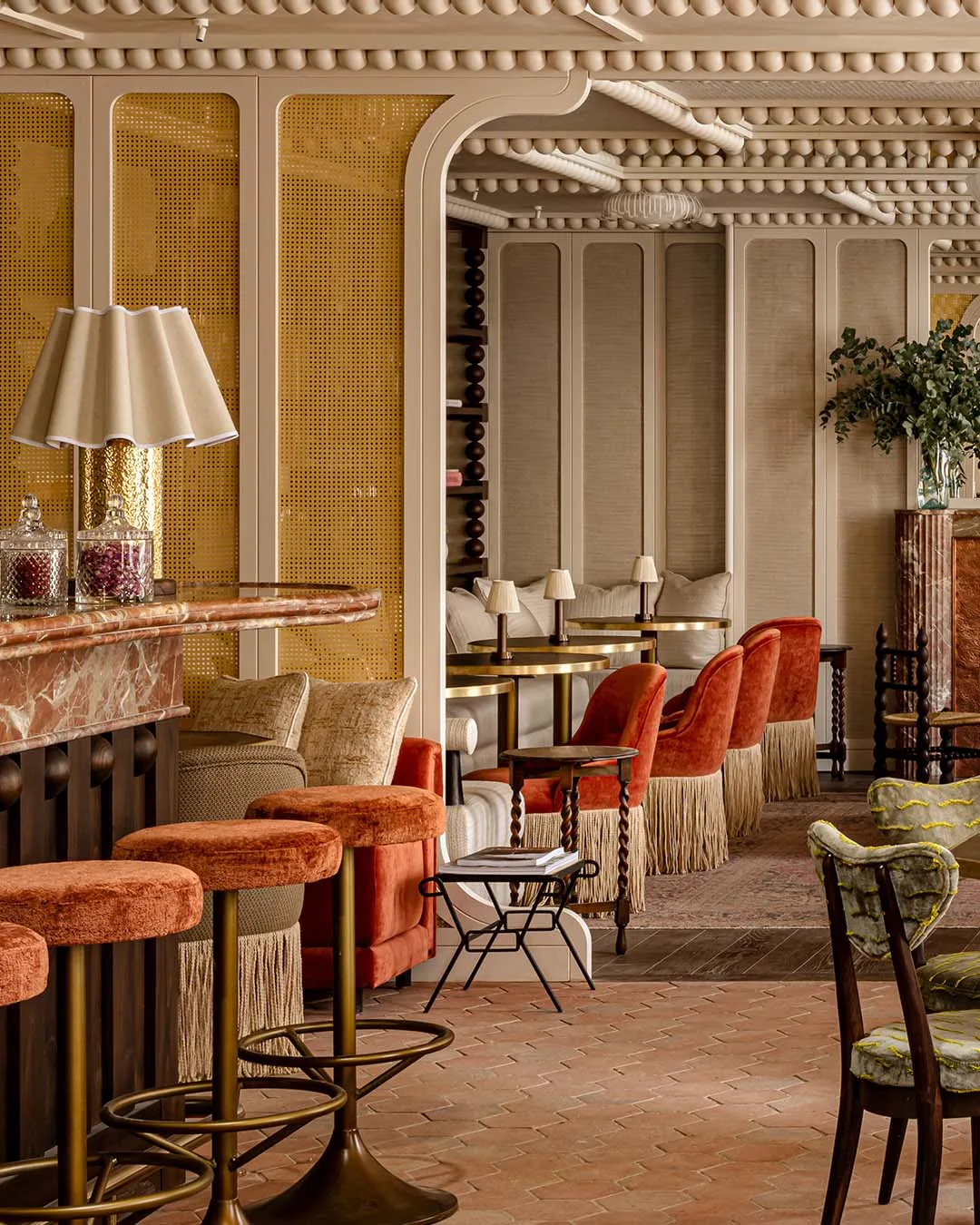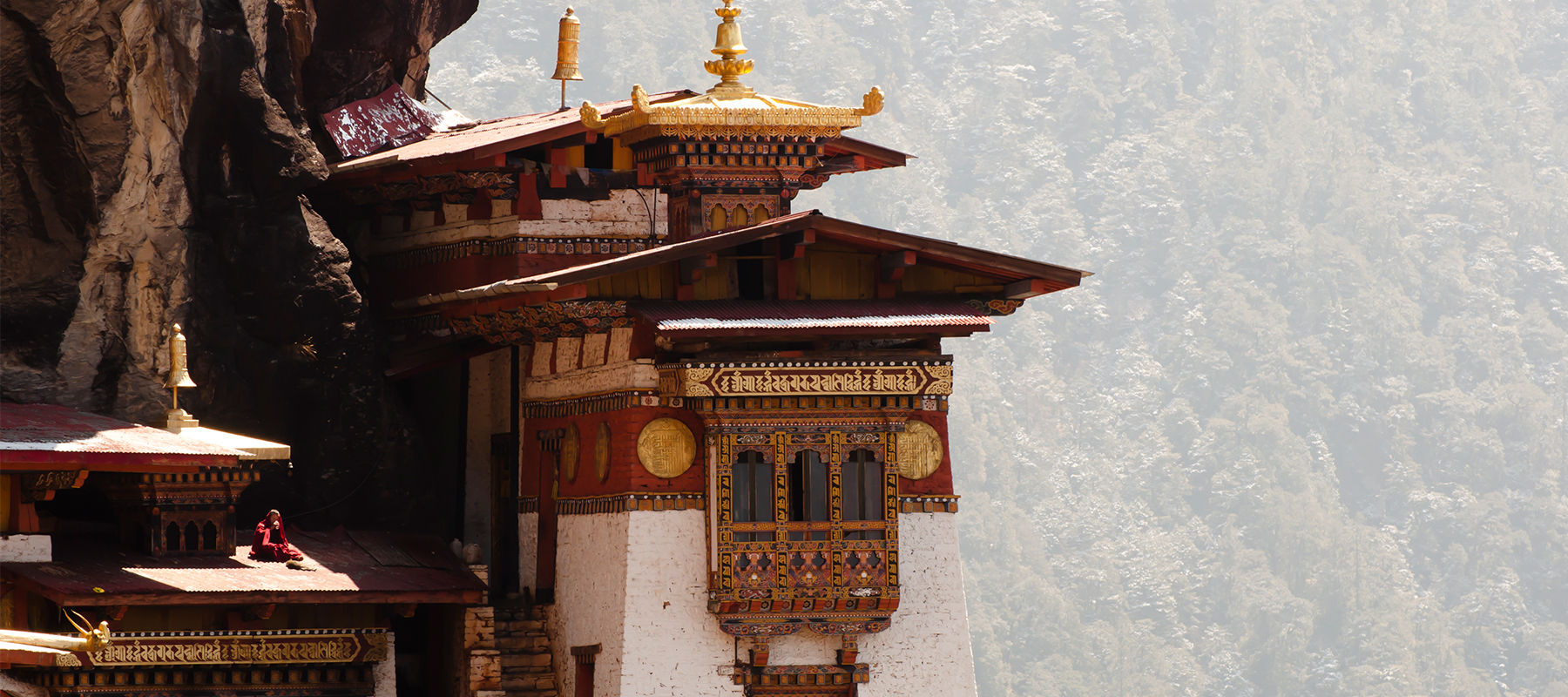
Several goblet-like lamps flicker within the colourful, ornate prayer hall at Gangtey Gonpa, a 17th century monastery on a mist-shrouded ridge overlooking Bhutan’s Phobjikha Valley. Filled with clarified yak butter, the lamps symbolise wisdom dispelling the darkness of ignorance (believed to be the root cause of human suffering in Tibetan Buddhism) and illuminating a path toward enlightenment. As a practicing Jain, an ancient Indian religion that espouses non-violence and asceticism among its major tenets, the metaphor of light banishing darkness is not foreign to me.
Seated cross-legged on the wooden floor in rows are a few dozen Buddhist monks dressed in maroon robes. The hall echoes with vibrations as they chant evening prayers. Occasionally, two of them beat ceremonial drums. Their deeply meditative state inspires me to reflect on my own awareness. How present am I? Is quieting my mind’s noise the key to happiness? Are my daily actions reflective of my values and goals?
But mostly, I feel extraordinarily fortunate to be witnessing this moment of melodic chanting and devotion. Though I wish my husband and children were here with me, I am travelling solo through this tiny Himalayan kingdom and finding that my solitude only heightens the country’s spirituality, which seems to pervade every aspect of life, society and even government. Bhutan’s allure is as much the culture and people as it is the journey inward that it promotes.

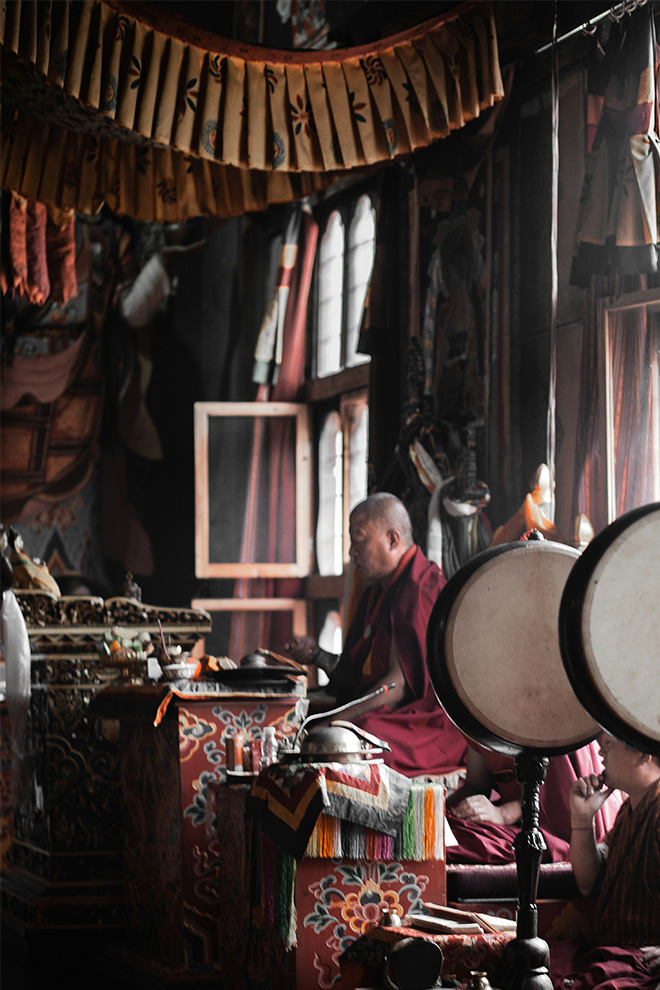
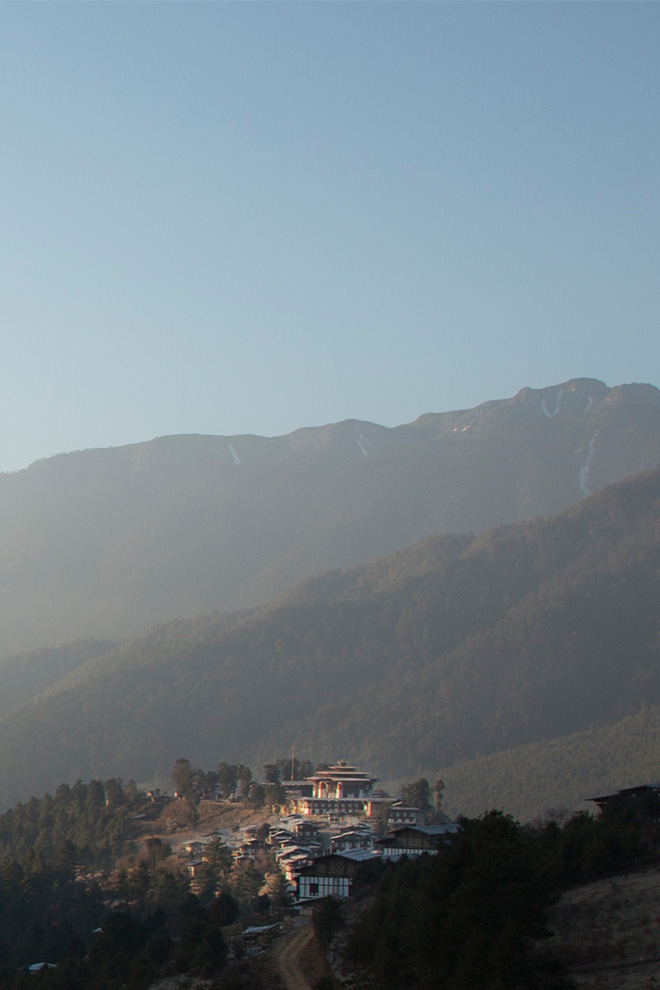
Built in 1613, the Gangtey Gonpa features the typical Bhutanese architecture of dzongs, or fortified monasteries: whitewashed stone walls, intricately carved wooden window frames and tiered roofs. Inside, soaring pillars not only support the structure, but are also decorated with religious and cultural themes, including dragons (Bhutan is known as the ‘Land of the Thunder Dragon’). All around are gorgeous, vibrantly painted frescoes depicting Buddhist deities and teachings. Before leaving, I walk about the exterior of the monastery and spin a few prayer wheels, resembling copper bells, clockwise, as a blessing.
The gonpa is a short distance on foot from Gangtey Lodge, a 12-room hilltop property inspired by the traditional farmhouses which dot the surrounding landscape. Remote and mountainous, Bhutan has long focused on a high-value, low-impact model of tourism which translates to a small number of travellers who are keen to experience its natural beauty and cultural richness. As a member of the Considerate Collection, Gangtey Lodge delivers on both fronts and then some.
It’s no secret that Bhutan is a hiker’s paradise. In 2022, the Trans-Bhutan Trail, an ancient 250-mile-long route that runs through the country, was restored and reopened after 60 years. Gangtey Lodge, too, offers guided hikes from the property through the forests and valleys which unfold from its doorstep, including a full-day excursion that incorporates a village visit to a cheese maker as well as bird watching. Phobjikha Valley’s alpine meadows are home to majestic black-necked cranes, providing crucial wintering ground for these endangered beauties.
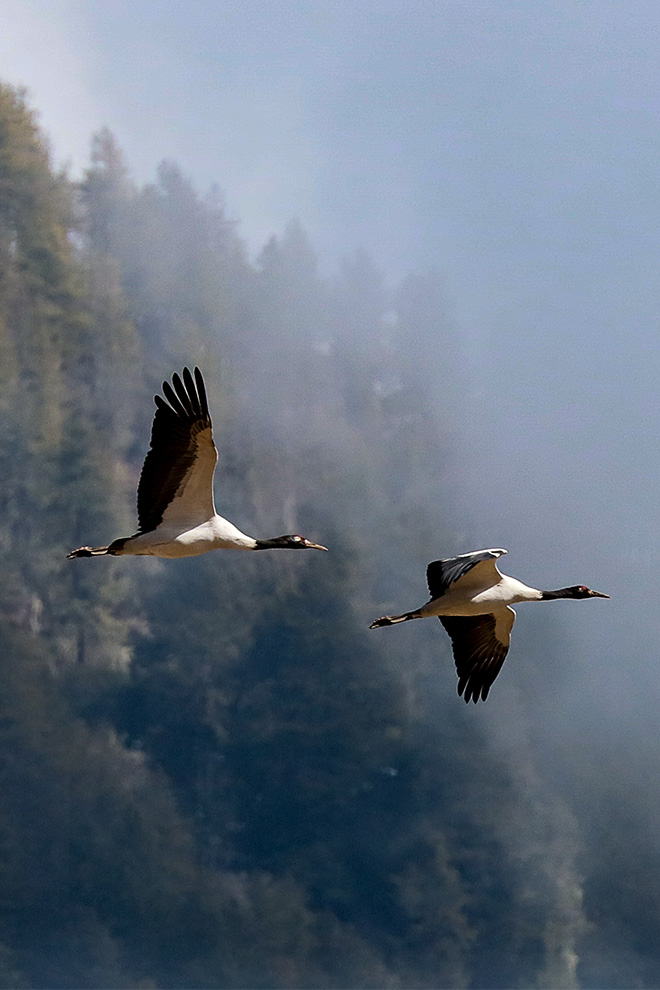
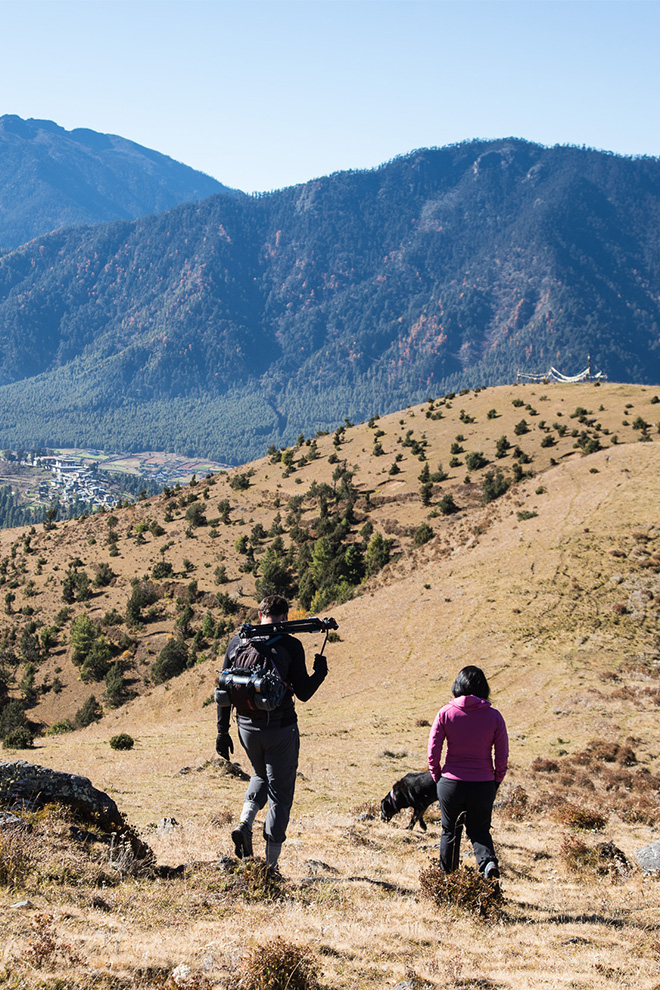
I am travelling solo through this tiny Himalayan kingdom and finding that my solitude only heightens the country’s spirituality.
My sprawling room features a wood-burning fireplace and a freestanding soaking tub, thoughtfully placed by the window to take in the sweeping views of the valley below, where yaks and horses roam in the distance.
I don’t utilise the tub, however, instead visiting the spa house for a hot stone bath, or dotsho, a centuries-old Bhutanese tradition. The water in the rectangular pinewood ‘tub’ is heated by local river rocks that are baked over an open fire for hours and then dropped in an enclosed section at one end of the bath. Artemisia leaves are scattered on the water’s surface. The minerals from the rocks and botanicals in the forest leaves make for a soak that’s not only relaxing and calming, but also medicinally therapeutic. Any tension I had melts away as I sink into the scalding water. I make a mental note to pick up some artemisia essential oil before departing.
Come dinner, I tuck into grilled eggplant with beetroot and oranges; pumpkin with tahini; and coconut flan. The variety and flavours are welcome, though, I could have just as easily feasted on the traditional Bhutanese dishes — buckwheat noodles and ubiquitous ema datshi (a spicy side dish of stewed chili peppers and cheese) — I’d devoured all week.
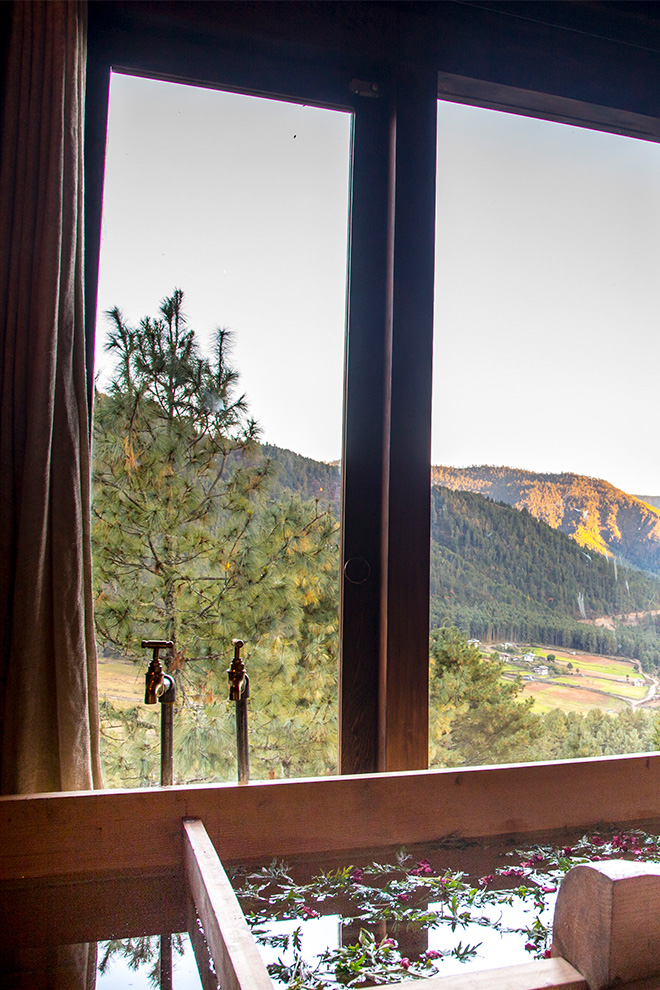
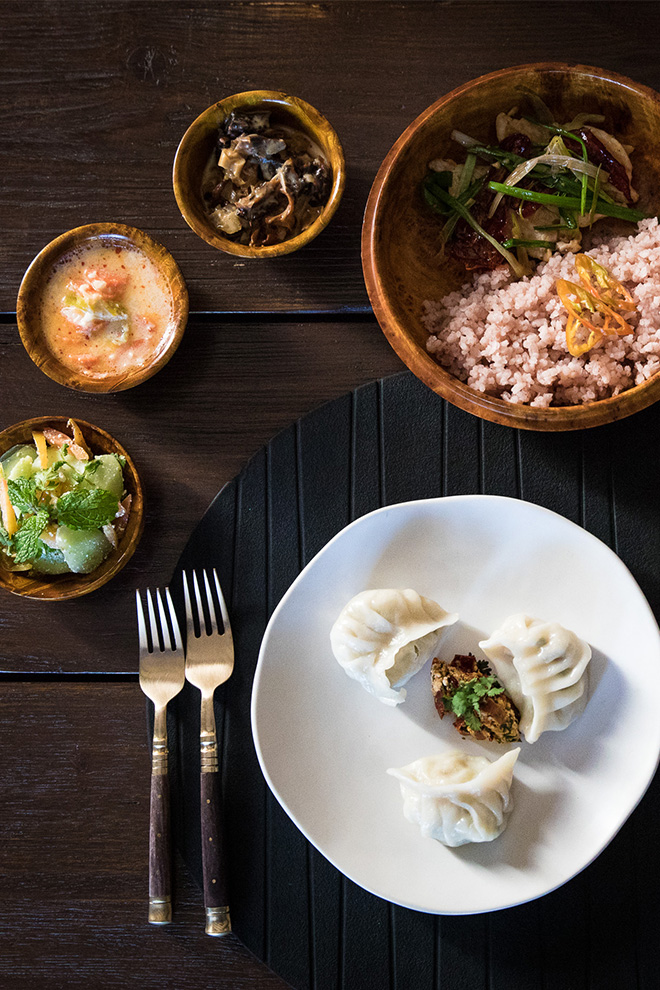
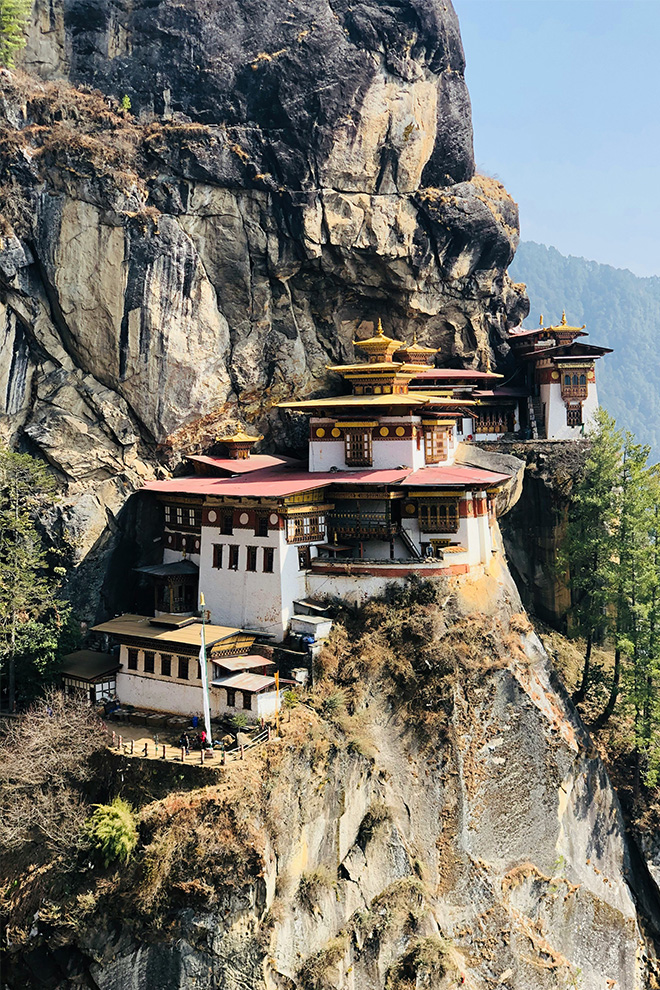
Tomorrow, I’ll journey toward Paro to hike the famed Tiger’s Nest, the iconic cliffside monastery built around a cave where Guru Rinpoche, the founder of Tibetan Buddhism in Bhutan, is believed to have meditated for three years, three months, three weeks and three days. But for now, I’m working on practising and appreciating stillness.
Share this article
Latest stories
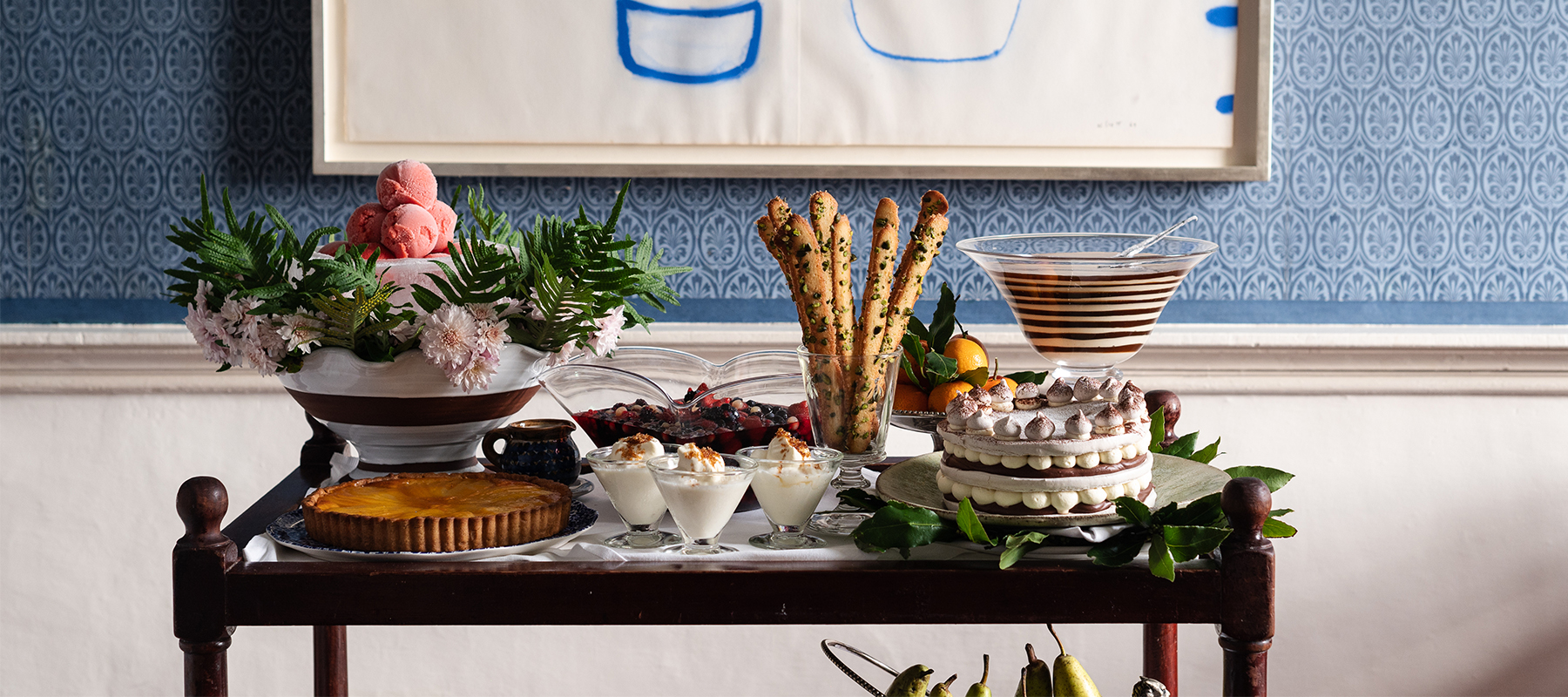
A foodie guide to Ireland: from coastal catches to country kitchens
With Guinness as rich as its landscapes are green — and whiskey never far from reach — Ireland’s charms can be drunk in and eaten up from the moment you arrive. And while its culinary reputation has soared in recent years, nothing quite compares to tasting your way around the

The natural highs of hiking solo in Costa Rica’s cloud forest
Out of nowhere, a stark yet melodic chirp punctuates the dense moss-heavy virgin forest, halting me in my tracks with its hypnotic, unadulterated beauty. I later discover it was likely the song of a black-faced solitaire, a bird that’s rare to see, yet glorious to the ears. And just one
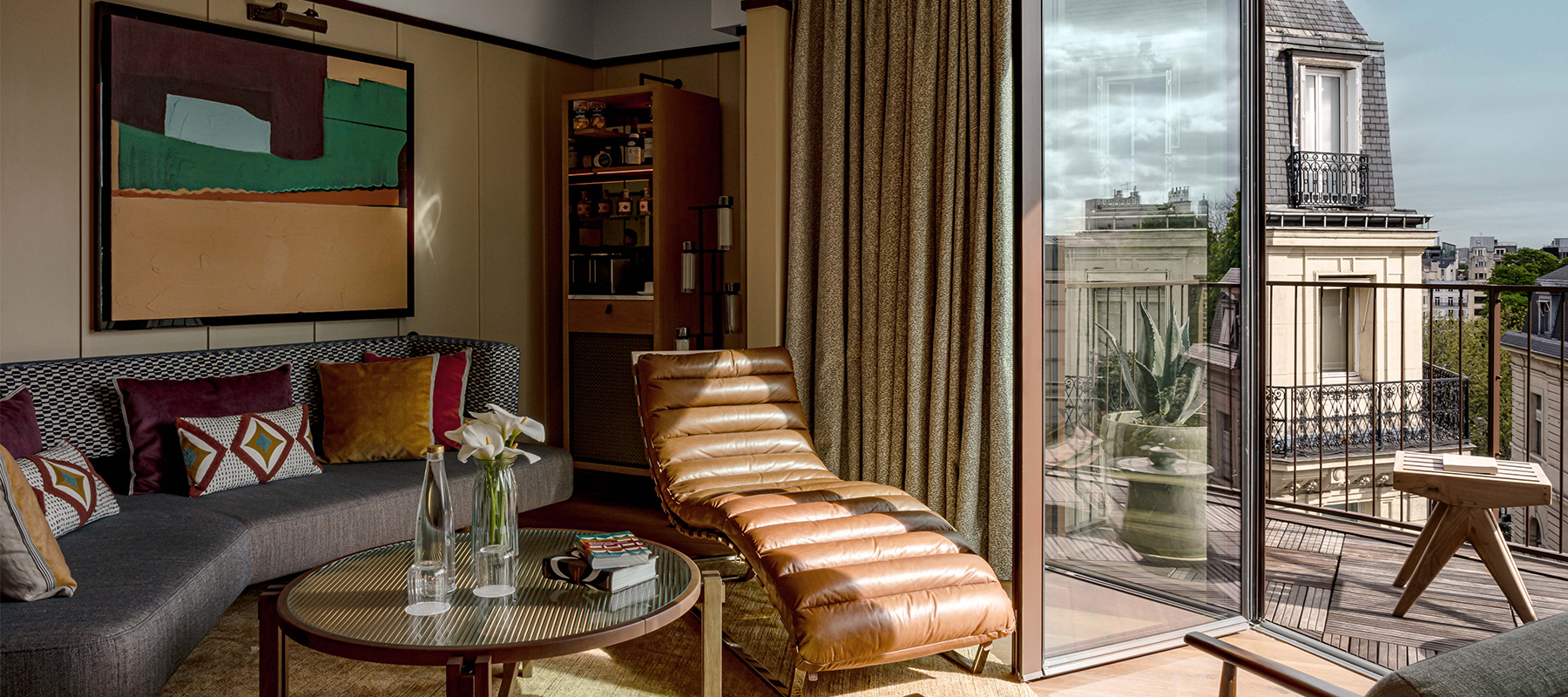
Hotel Norman, Paris: design-led luxury steps from the Champs-Élysées
There’s no shortage of glamorous hideaways in Paris, but few manage to bottle an era quite like Hotel Norman. Steps from the Champs-Élysées, this newcomer channels the seductive polish of midcentury modernism with the confidence of a hotel that knows exactly who it’s for: travellers who appreciate quiet luxury, meticulous

6 eco-friendly hotels offering ethical wildlife experiences
If you prefer your wildlife encounters without the crowds — and with a side of serious sustainability — SLH’s Considerate Collection has you covered. And with World Wildlife Conservation Day shining a light on the importance of protecting our planet’s most vulnerable species and habitats, there’s no better moment to

